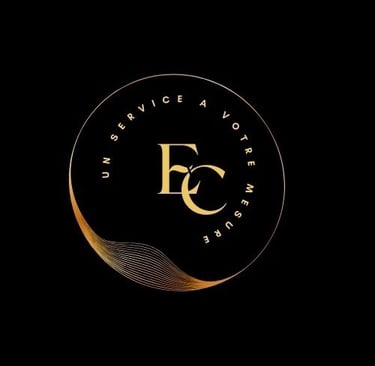Social Listening and Marketing Monitoring: A Key Tool for SMEs and VSEs
Discover how social listening helps SMEs and VSEs better understand their market, anticipate trends and manage their e-reputation. A pragmatic and accessible approach to optimize your marketing strategy with concrete and actionable insights.
MARKETINGVEILLE MARKETINGWEBMARKETING
Lydie GOYENETCHE
2/1/20254 min read


The importance of marketing monitoring in social listening: a strategic lever for companies, politicians and NGOs
In a world where digital conversations shape public opinion and influence purchasing decisions, marketing intelligence through social listening has become an indispensable tool for companies, non-governmental organizations (NGOs) and political actors. Understanding what is being said online helps anticipate trends, prevent crises, and refine communication strategies.
1. Context: Who is really expressing themselves on social networks?
Social listening is based on the analysis of content shared on social networks, but it is essential to understand who is really expressing themselves online. Not all categories of consumers participate in the conversation in the same way.
According to DataReportal's Digital 2024 report, an estimated 60.6% of the world's population uses social media, or 4.95 billion users. However, not all of them are committed in the same way:
25-34 years old: The most active age group on social networks.
18-24 years old: Very engaged on platforms like TikTok and Instagram.
35-49 years old: Present on Facebook and LinkedIn, but with a more moderate participation.
50+ years: Majority passive consumption, with an increased presence on Facebook.
In terms of engagement, only 30% of users regularly post content, while 70% consume without interacting. This data is crucial for companies, as social listening only reflects the perception of active users, leaving out a large part of the market.
The methodological and ethical limits of social listening
Social listening brings undeniable strategic value, but it also has some limitations:
Biased representativeness of data: Since only a fraction of users are actively speaking, analyses based solely on this data risk being partial and not representative of all consumers.
Lack of qualitative context: Social listening tools analyze overall trends and sentiments, but they struggle to understand the precise context of conversations. A negative comment can be sarcastic, exaggerated, or come from a fake account.
Ethical issues: The massive collection and analysis of online conversations raises questions about privacy and data protection. The application of regulations such as the GDPR (in Europe) is essential to avoid abuses.
2. What is marketing intelligence through social listening?
Social listening is a method of monitoring social networks, forums, blogs and news sites. This marketing monitoring is not limited to the simple collection of data, it also allows a detailed analysis of trends and the perception of a brand, a product or a cause.
Unlike traditional market research, which is one-off and limited to a given sample, social listening offers a dynamic, real-time view of the audience's expectations and reactions.
While major brands use social listening to refine their global positioning, small and medium-sized companies find it a lever for local adaptation and a detailed understanding of their market. In a competitive world where visibility is more difficult to obtain, the ability to listen and capture weak signals allows an SME to better understand the expectations of its potential customers, adjust its offer and react to new trends. Far from seeking global awareness, these companies rely on social listening to identify opportunities within their direct ecosystem, spotting relevant conversations, reviews of their competitors, or emerging needs that have not yet been met. This tool also allows them to adopt a reactive posture in the face of negative reviews, by controlling their e-reputation and interacting quickly with their customers. Thanks to this monitoring, an SME can anticipate the expectations of its target audience, strengthen its local communication and refine its marketing campaigns with a precision that a more traditional approach could not offer.
Why is it a strategic lever for companies?
1. Adapt products to consumer trends
The example of L'Oréal and the brassy hair trend illustrates the importance of social listening. By monitoring discussions on Instagram and TikTok, L'Oréal detected a nascent craze for this color before it became a mass phenomenon. By quickly adjusting its offer, the brand has outpaced its competitors and boosted its sales.
2. Preventing and managing a crisis
The case of McDonald's shows how social listening can avoid a scandal. Faced with the dissemination of videos showing dirty kitchens, McDonald's quickly identified the problem, tightened its health controls and published reassuring videos behind the scenes of its restaurants. This quick reaction limited the negative impact on the brand.
3. Refine positioning and communication
Social listening helps align a brand with the expectations of its target. Nike, in analyzing the discussions around social injustice, chose to support American football player Colin Kaepernick in his "Believe in Something" campaign. While this decision generated initial controversy, it ultimately strengthened its image among young, engaged consumers.
4. Conclusion: A Powerful but Partial Tool
Social listening is a strategic asset for companies, NGOs and political actors. It makes it possible to better understand public opinion, to anticipate crises and to refine communication strategies. However, its implementation must be adapted to the size of the organization and its needs:
For an SME, simple tools and in-house configuration are sufficient.
For a multinational, a consultant or a dedicated team may be needed.
In politics and NGOs, monitoring must be coupled with a fact-checking and engagement strategy.
Finally, it is important to keep in mind that social listening only captures individuals who express themselves on social networks, leaving aside a silent part of the population that consumes without interacting. This is why it is essential to supplement it with other methods:
Traditional surveys to capture less active populations online.
Analysis of customer reviews and specialized forums, which offer more detailed insights.
Panels and focus groups, which provide a more qualitative view of opinions.
By combining these approaches, companies and organizations can better adjust their strategies and avoid the biases associated with a too partial reading of digital conversations.
Sources : DataReportal Digital 2024, Statista, Pew Research


EUSKAL CONSEIL
0033782505766
euskalconseil@gmail.com
This website uses only Plausible Analytics, a privacy-friendly web analytics tool.
No cookies are used, and no personal data is collected from visitors.
The system is fully compliant with the General Data Protection Regulation (GDPR), the ePrivacy Directive, and CNIL recommendations.
You can read more about Plausible’s data policy here: https://plausible.io/data-policy